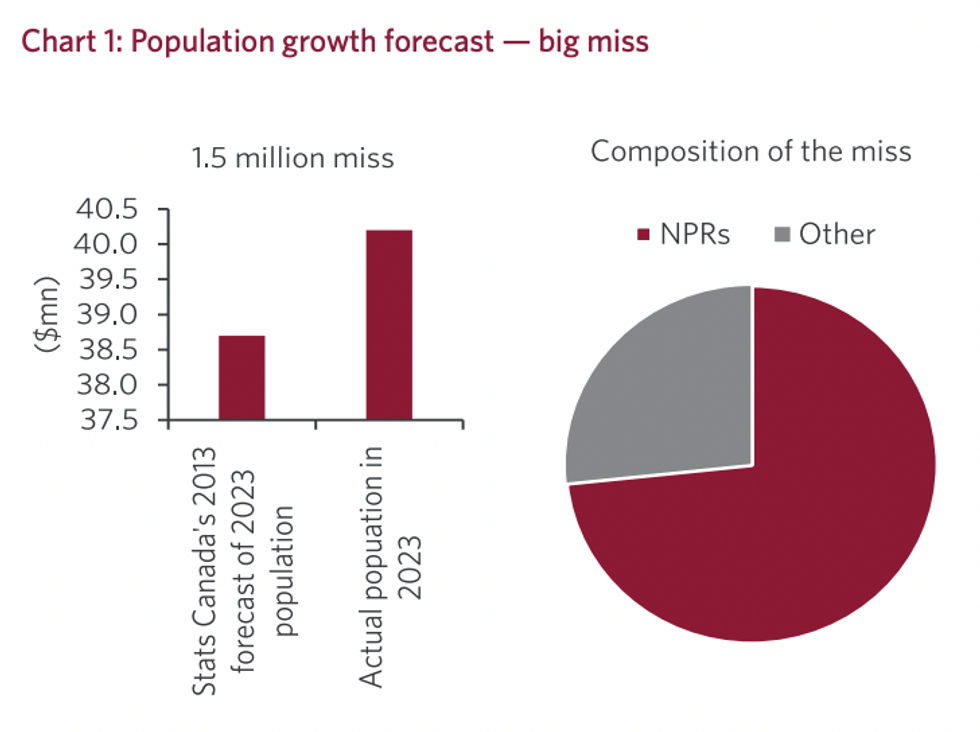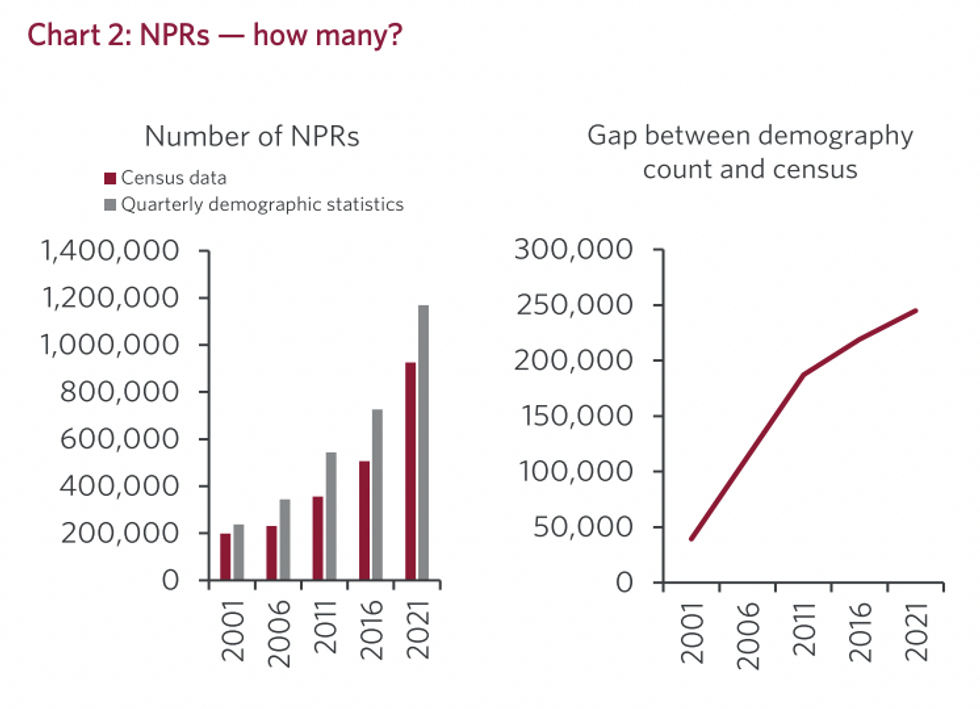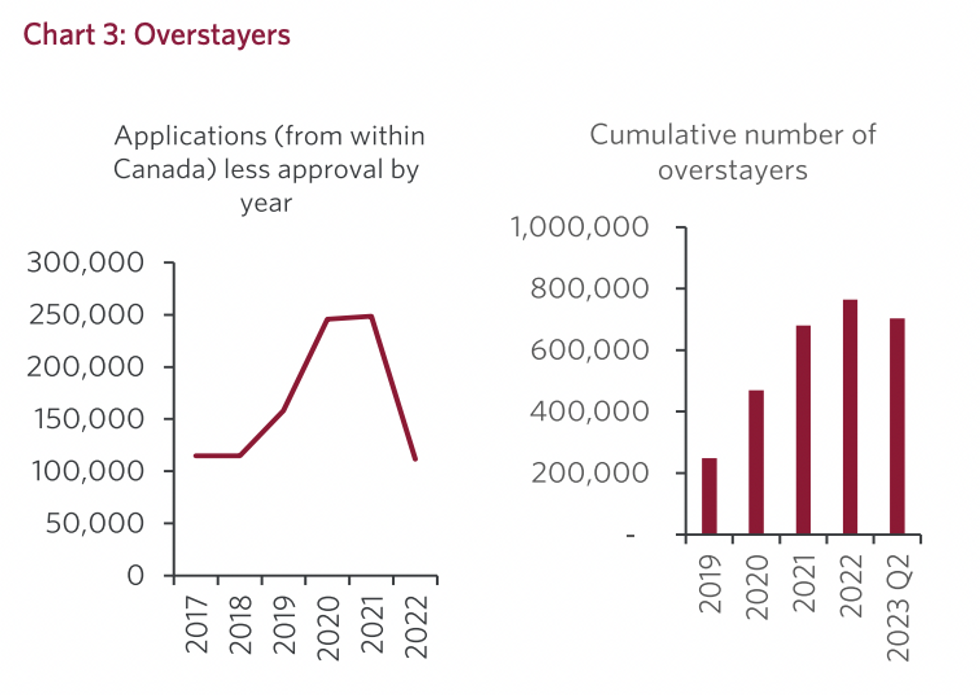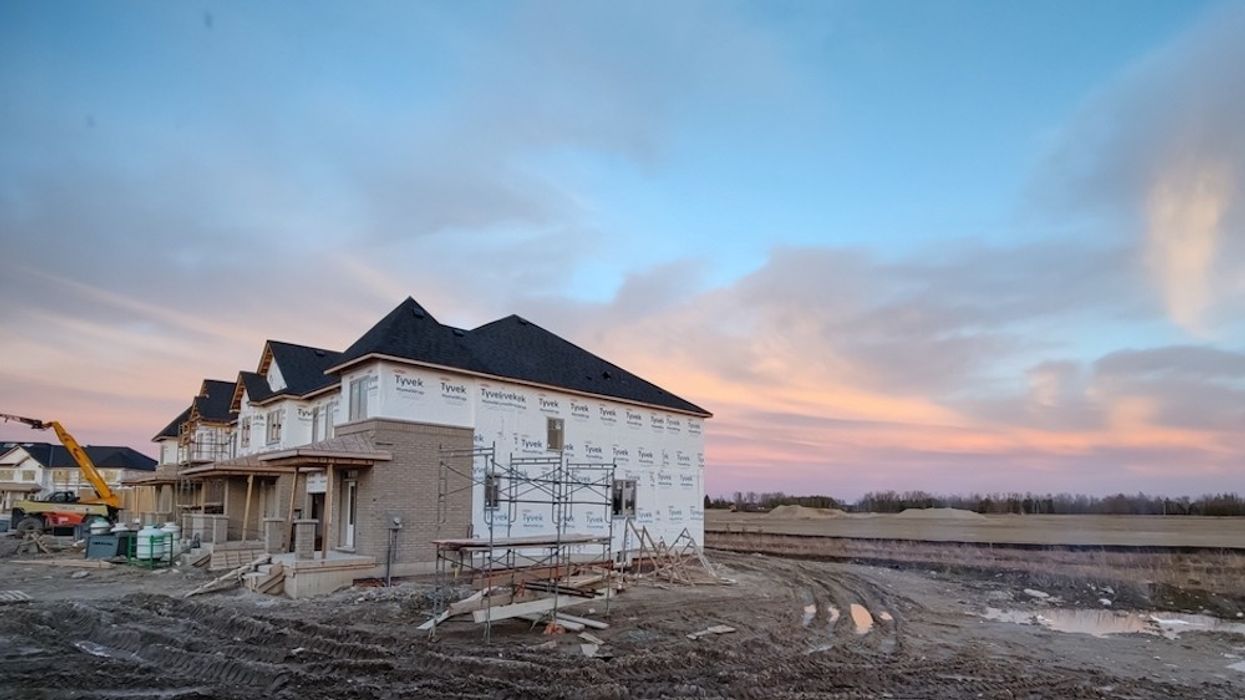While there’s little debate that Canada is facing a housing crisis, CIBC Deputy Chief Economist Benjamin Tal suggests that government agencies have underestimated its scale and severity.
In a report published Wednesday, Tal points to the country’s share of non-permanent residents (NPRs) — including international students, short-term visitors, and temporary foreign workers — saying that “the official number of NPRs that is widely quoted and used for planning purposes undercounts the actual number of NPRs residing in Canada by close to one million.”
According to forecasts from 2013, the Canadian population was expected to reach 38.7 million this year. In reality, the population sailed well past that estimate, hitting the 40 million markin June.

“No less than 1.1 million of that 1.5 million forecast miss was due to a much larger than expected increase in the number of NPRs, and most of the remaining miss was due to stronger than expected immigration,” writes Tal.
(That “miss” he adds, translates into more than two years of building capacity.)
“Of course, you cannot blame anybody for forecast errors. Things happen. Government policies and priorities change. But two measurement issues related to the counting of NPRs suggest that the size of the miss might be closer to 2.5 million.”
Understanding The Undercount
As for how such a gaping miscalculation could occur, Tal draws attention to discrepancies between Statistics Canada’s (StatCan) census — which, mind you, requires NPRs to navigate fairly particular and oftentimes confusing census instructions — and its “more dynamic” quarterly and annual estimates of population growth.
The 2021 census, for example, indicated that there were 925,000 NPRs in Canada. In contrast, StatCan’s quarterly estimate put the count at 1.17 million.

Although the gap between those two counts, at just over 20%, has “apparently narrowed” over time (NPRs were undercounted by more than 40% in the 2011 census) recent years have seen an “exponential increase” in the absolute number of NPRs, and there’s more riding on those population counts.
“[In 2011], the absolute number of NPRs was relatively small, so the undercounting did not have profound implications on population growth and housing market demand planning, unlike today’s situation,” says Tal.
StatCan’s population estimates directly inform CMHC’s household formation forecast, Tal also notes. “And if your starting point is far too low, your forecast will be far too low, resulting in a suboptimal planning process.”
Accounting For “Overstayers”
Wednesday’s report notes that StatCan assumes that temporary resident (TR) visa holders leave the country 30 days after the expiry of their visa.
“But the majority of those temporary residents don’t leave after their visas expire,” writes Tal, citing the 2021 International Student Survey of the Canadian Bureau of International Education, which revealed that 60% of students surveyed had plans to extend their stays in Canada by pursuing permanent residency.
“Many are awaiting an ‘invitation’ through the Express Entry Program. Most of the remainder, while eventually intending to return to their home country, are attracted to extend their stay given ample employment opportunities in Canada,” says Tal. “There is no known administrative action by IRCC to remove these expired TR visa holders from Canada. Nor is there a known mechanism to withdraw their employment or tax slip issuances by the CRA.”

While it’s impossible to know how many temporary visa “overstayers” there are in Canada (there are no official statistics available), the report estimates that, between 2017 and 2022, the number was north of 750,000. That’s based on the gap between applications — for permanent residents, student visas, work visas, and the extension of resident visas — submitted from Canada and approvals.
Those “overstayers,” notes Tal, are not included in StatCan’s population counts, which has resulted in ‘materially understated’ population, housing, and service demand forecasts, particularly with respect to Canada’s university cities and towns.
“The practical implication of that undercounting is that the housing affordability crisis Canada is facing is actually worse than perceived, and calls for even more urgent and aggressive policy action, including ways to better link the increase in the number of NPRs to the ability to house them,” concludes Tal. “The federal government’s fall fiscal update is a prime opportunity to demonstrate that kind of thinking.”
- In The Grips Of A Housing Crisis, Will Capping International Students Fix Anything? Many Say No ›
- 'No Silver Bullet': Economists Recommend Targeted, Coordinated Policies To Solve Canada's Housing Crisis ›
- Canada Could Be Sitting On “Largest Housing Bubble Of All Time” — What Will It Take To Burst? ›
- Tune In: RESCON Housing Summit To Tackle Crisis Solutions ›
- More Can Be Done To Fix Canada's Housing Crisis ›
- Economists Warn Against Hanging Hopes On Housing Supply ›





















